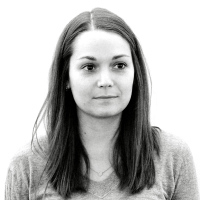Photojournalists, editors and journalistic ethics professors were loathe to criticize the photographer, R. Umar Abbasi, who shot the New York’s Post’s instantly infamous cover image Tuesday, showing the Q train that killed 58-year-old Ki Suk Han bearing down on him, with the headline “DOOMED: Pushed on the subway track, this man is about to die.”

But while his peers sympathized with his instinct to capture a dramatic moment, they excoriated the Post for running the provocative shot of the final moment of a man’s life.
“News photographers in situations where something horrible has happened are often viewed as vultures who exploit other people’s suffering, and I think that’s an unfair rap,” said Holly Hughes, editor of the photography trade publication Photo District News. “I think there is newsworthiness in conveying to the world important major events which can sometimes be upsetting. However, I don’t know what we learned from this photo.”
Editors need to ask first if an image as potent as this one is necessary to advance a story, said Alisa Solomon, who teaches ethics at the Columbia University Graduate School for Journalism, and then if it is newsworthy enough to publish despite the hurt it might cause the subject’s loved ones. The second consideration is especially important for a cover image, she said, which people can easily come across without seeking it out.
“This isn’t like a naked child running from a napalm bombing that’s going to alert Americans to part of what’s happening in a war in which their country is engaged,” she said, referring to Nick Ut’s iconic 1972 photo of a naked Vietnamese girl, her face contorted by pain and fear and her clothes melted off by napalm fleeing in fear. “That was a much-debated photograph”—in part because it violated the wire’s strict ban on nudity—“but there was also a much more persuasive argument that it filled a news function.”

Still, Solomon was loathe to blame the photographer, noting that people who make a living taking pictures are able to do so because they function by reflex. “If someone in a terrible situation takes a picture that passes the newsworthy test, then we admire them for having the sense of mind to capture a moment that needed to be published,” she said. The idea that during the terrible situation, the photographer will be fairly able to judge the moment’s newsworthiness sets a very high bar for perhaps the one group that should indeed shoot first and ask questions later.
The Post article that accompanied the cover, however, suggests that the photo was shot accidently, as Abbasi used his camera to try and save Han’s life:
“I just started running, running, hoping that the driver could see my flash,” said Abbasi, whose camera captured chilling shots of Suk’s tragic fight for his life.”
While Abbasi and Post Photo Editor Dave Rentas did not respond to requests for comments on the photo and the cover, Frank Ritchin, a professor of photography at NYU, was dubious of the story’s account of the photo’s origin. The picture appears to show Abbasi just feet away from Han—much closer than anyone else in the station, or at least the frame.
“The photographer argues that he flashed the camera at the train, but in his picture there is nobody near the man. He could have just walked up and helped him,” said Ritchin.

But Justin Lane, a photographer and the New York bureau chief for the European Press Agency, warns that the public shouldn’t assume too much about the photographer’s motives from what the photo shows. “The picture is making us think one thing, but I would caution against making assumptions about what the photographer should or shouldn’t have done because we don’t know what happened,” he said. Lane stressed, though, that if Abbasi in fact could have helped, he should have: “There is no picture that I know of that would be worth having not helped somebody.”
In discussing the Post cover, several of the professionals the Beast spoke with also mentioned Kevin Carter’s Pulitzer Prize-winning 1993 photo of a collapsed, famished child being stalked by a vulture in Sudan. Carter—who was both praised for the shot and criticized for photographing the girl rather than helping her—took his own life in 1994.
“People are upset by this,” Solomon said of the train-shoving incident captured on the Post’s cover. “We all ride the subway every day, it raises the anxiety level. We don’t know that the photographer was in a better situation to help than any other bystanders, but he becomes a magnet for all of the horror and anxiety and moral outrage that we have about this terrible thing that happened. I think that’s somewhat displaced.”
Stephen Mayes, managing director of the photo agency VII, asked why the Post—or any publication—should be expected to withhold a photo.
“The event happened in public, people saw it. Now it’s just been seen by more people,” he said. “It is shocking. It doesn’t make me feel great to look at it. But it didn’t make me feel great when I heard about the incident either. To me, withholding that picture would have been a form of censorship.”
When he worked from 1976 to 1982 as the New York Times Magazine’s photo editor, Ritchin says he developed a golden rule for questionable images.
“Put yourself in the position of the subject and ask: ‘Is there any reason why the picture should be published that transcends the injury to privacy it could cause?’”
“By photographing a battlefield, you can be helpful in the long run because people see the nature of war,” said Ritchin. “There are no redemptive aspects of this. By showing it, you’re not helping future subway riders.”





